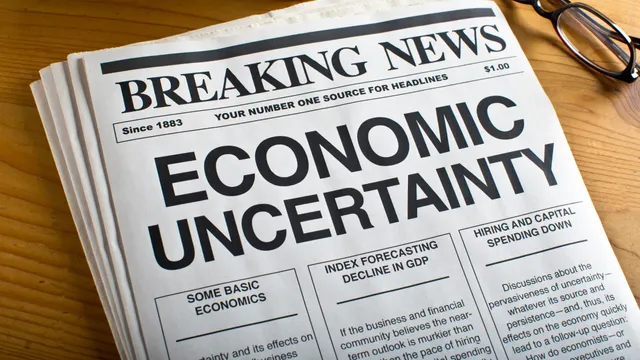The Great Reset Unmasked: A Controlled Implosion of the Financial System
Market Manipulation: The Hidden Forces Behind Economic Crises

In the vast theatre of global finance, the curtains rarely pull back far enough to reveal the true machinations behind economic instability. Yet, a closer examination of financial history coupled with current events suggests a pattern of deliberate orchestration by a select group of financial elite, whose influence over central banks and the monetary system has profound implications for both the economy and the average citizen.
The Illusion of Economic Stability
While the financial system is often touted for its resilience and robustness, beneath this veneer lies a stark reality: a small cadre of power brokers manipulates the levers of power, including governments, intelligence agencies, and the media. This invisible network not only shapes economic policy but also prepares to capitalise on crises to consolidate wealth and control.
Historical events like the Great Depression and the World Wars serve as clear examples. These were not merely economic downturns caused by external shocks but pivotal moments that allowed for significant wealth and power shifts towards those who controlled the money supply. Today, similar strategies are employed under the guise of addressing economic instability, popularly dubbed as the “Great Reset.”
A critical indicator of economic distress is the velocity of money – essentially, how fast money passes from one transaction to another. A slowdown in this velocity often precedes economic downturns, suggesting an impending crisis. Far from being unanticipated, the looming collapse appears to be a calculated move by the financial elite to trigger chaos, maintain control, and implement a new economic order.
.webp)
The Next Global Financial Crisis: An Engineered Collapse?
When we look at one of the most significant shifts in financial infrastructure, that is, the move from physical securities (like stock certificates) to digital ‘security entitlements’, it becomes clear. That transition, overseen by figures like William Dentzer Jr., a former CIA operative turned financial overseer, marked a pivotal change in how financial assets are controlled. It simplified the global consolidation of financial assets, underpinning a broader agenda to centralise economic power.
Dentzer’s career trajectory took him from setting up anti-communist organisations in Europe to influential positions within the U.S. government’s international development initiatives. His unexpected move into finance came when he was appointed as the New York State Superintendent of Banks by Nelson Rockefeller. Shortly thereafter, he assumed the role of Chairman and CEO of the Depository Trust Corp. (DTC), a position he held through the critical years of dematerialisation.
The origins of the so-called “paperwork crisis” of the late 1960s, precipitated the move towards dematerialisation. This crisis, characterised by overwhelming volumes of physical stock certificates that led to occasional trading suspensions on the New York Stock Exchange, was cited as a reason for the government’s intervention in securities processing. A government-backed committee recommended transitioning to electronic records and the establishment of a trust company to hold these records. This led to the formation of DTC, which later became a model for centralised securities depositories and clearing counterparties.
The urgency and necessity of dematerialisation might have been exaggerated or even manufactured to facilitate this transition, given that stock exchanges managed to continue operating with increasing trade volumes even before the full implementation of dematerialisation. This strategic shift, executed under the guise of solving a logistical issue, played into the hands of those aiming to centralise and control financial assets on a global scale.
The transformative shift in the handling of securities, unveils a profound and systematic deception underpinning modern financial systems. This deception involves the reconceptualisation of securities from concrete personal property into mere “security entitlements,” a change that has far-reaching implications for ownership and control.
For over four centuries, securities were legally recognised as personal property, assuring owners definitive rights. However, a seismic shift occurred when these securities were morphed into “security entitlements.” This change, likened to a subterfuge, means that what people believe they own could be controlled or seized by others through complex legal frameworks and financial maneuvers, essentially without the true owner’s insolvency or direct involvement.
Imagine purchasing machinery with cash, owning it outright with no debt. Yet, unbeknownst to you, the supplier uses your equipment as collateral for its own loans. If the supplier goes bankrupt, your machinery, along with others, can be seized by the supplier’s creditors, all sanctioned by law without the need for judicial review.
This deceptive practice has been globalised for all tradable financial instruments. Securities that investors believe they own in pension plans, investment funds, and custodial accounts are now merely parts of a massive pool used as collateral in the derivatives market, which is disproportionately larger than the entire global economy. This system is supported by a complex chain of re-hypothecation where the same collateral is repeatedly leveraged.
The Globalisation of Financial Deception
Significant legal and systemic changes have facilitated this shift. In the United States, amendments to the Uniform Commercial Code (UCC) across all states subtly eroded traditional property rights attached to securities. These changes positioned all securities in an undifferentiated pool, where they can be borrowed by account providers for their transactions. Even if securities are nominally segregated, the legal protections are minimal, and in the event of the provider’s insolvency, all holders receive only a pro-rata share of whatever remains, regardless of previous arrangements or restrictions.
These changes were not publicised widely; they were implemented quietly through technical amendments and legal reinterpretations rather than through direct legislative actions. This systemic overhaul was aimed at ensuring that in any financial crisis, the ‘protected class’ of secured creditors would have unfettered access to the pooled securities, significantly disadvantaging the individual investor.
To recognise the depth and breadth of the manipulation embedded in the financial system, requires a critical evaluation of who truly benefits from these arrangements. A grim picture of a system designed not to safeguard the financial assets of the ordinary citizen but to serve the interests of a powerful few is what emerges.
The strategic global alignment of financial regulations is designed to favour secured creditors, dramatically altering the ownership and control of securities. This change was executed under the guise of creating legal certainty and enhancing the mobility of securities across borders.
Historically, securities were held in a way that legally recognised the rights of the individual owners. However, the movement towards “harmonisation” began in the United States and was propelled internationally after the dot-com bust, leveraging financial instability and fears of collateral shortages as justifications. This led to the drafting and eventual signing of the “Hague Convention on the Law Applicable to Certain Rights in Respect of Securities Held with an Intermediary” in 2006. The convention introduced the “Place of the Relevant Intermediary Approach” (PRIMA), which prioritises the law of the intermediary’s location over the owner’s national laws, effectively stripping owners of their ability to reclaim securities used as collateral without their consent.
James S. Rogers, a key figure in these developments, was instrumental in revising the UCC Article 8, which facilitated the modern system of electronic, book-entry securities holdings. This revision significantly limited the rights of securities owners, favouring the interests of financial intermediaries and secured creditors.
The European Union played a role in this global alignment. Despite resistance due to the strong tradition of protecting property rights, the EU adopted Directive 2002/47/EC, which aligned with the principles laid out in the Hague Convention to facilitate the use of securities as financial collateral across borders. This directive, along with other regulatory frameworks like the Central Securities Depository Regulation (CSDR), further solidified the legal framework favouring creditors over securities owners.
These complex and often obscured changes highlight the general lack of awareness or concern about the implications for property rights and financial stability. A prevailing sense of inevitability among those within the system, underscores a profound shift in legal and financial norms that prioritise the interests of powerful financial entities over individual rights.
The Collateral Damage of Financial Policies
.webp)
The ramifications of pivotal changes made to the U.S. Bankruptcy Code in 2005, particularly those that focus on the “safe harbour” provisions are serious. These provisions were significantly altered just before the onset of the Global Financial Crisis. While “safe harbour” suggests protection, in this context, it specifically ensured that secured creditors could seize client assets without the risk of those actions being legally contested later. This development prioritised the interests of large financial institutions over the rights of individual clients.
The amendments to the Bankruptcy Code made under the Bankruptcy Abuse Prevention and Consumer Protection Act of 2005 were critical. These changes shield certain financial transactions, including derivatives like securities contracts, commodities contracts, forward contracts, and repurchase agreements from the usual bankruptcy proceedings that could reverse fraudulent transfers. Notably, these provisions mean that transfers deemed constructively fraudulent – those made without receiving reasonably equivalent value – can no longer be challenged if they fall under the umbrella of these protected transactions.
Legal experts like Stephen J. Lubben have pointed out the broad scope of these safe harbour provisions, which effectively cover the entire derivatives market. This market-wide protection has been justified by the derivatives industry on the grounds of preventing systemic risk – the fear that blocking or reversing transactions during bankruptcy could trigger a cascade of failures in the financial sector. However, this rationale ignores the potential for these rules to exacerbate financial crises by encouraging a rush to seize assets, thereby hastening the collapse of financially distressed firms and increasing volatility in the broader market.
The Lehman Brothers’ bankruptcy highlighted the practical effects of these provisions. During its financial distress, Lehman Brothers saw significant assets seized by J.P. Morgan (JPM), its custodian. Under traditional bankruptcy law, such actions would have been viewed as preferentially fraudulent, especially since they benefitted an insider. However, J.P. Morgan successfully defended its actions by referencing the safe harbour rules, arguing that these were exactly the type of transactions that the law aimed to protect to maintain market stability. The court upheld this view, asserting that transactions of systemic significance should not be disturbed by bankruptcy challenges, emphasising that only large financial institutions – described as members of the “protected class” – can leverage these protections.
The notion of “safe harbour” serves to protect powerful financial entities at the expense of smaller creditors and individual investors. This protection creates a financial environment where major institutions can operate with considerably less risk of legal repercussions, even when their actions might be detrimental to the broader economy and individual asset holders. The consequences of this skewed protection were starkly evident in the aftermath of the financial crisis, where no significant legal actions were successfully taken against executives of large institutions, reinforcing the perception that these entities and their leaders are effectively above the law.
The critical role and inherent risks associated with Central Clearing Parties (CCPs), entities that manage the counterparty risk for transactions in derivatives, securities, and other financial instruments is worth noting. These institutions are vital to the financial system’s infrastructure, acting as intermediaries that ensure the smooth execution of trades by stepping in when one party defaults.
CCPs consolidate much of the systemic risk within the financial market by centralising the clearing and settlement processes. This concentration of risk poses a significant concern; if a CCP were to fail, it could have catastrophic implications for the global financial system.
Despite the increase in regulatory requirements for CCPs to hold more capital and collateral, there remains a significant misalignment between different jurisdictions’ financial regulations. This misalignment could lead to inefficiencies and vulnerabilities in the event of a CCP’s collapse. Additionally, the European Union has been actively working on creating a framework that ensures CCPs can be resolved without exposing taxpayers to financial risk, reflecting a widespread regulatory intent to shield the public from the fallout of financial infrastructures’ failures.
Despite the safeguards put in place, the capital held by these entities, such as the Depository Trust & Clearing Corporation (DTCC), is relatively small compared to the vast amount of assets they oversee. This discrepancy raises questions about the true resilience of CCPs in extreme financial scenarios, where multiple major members might default simultaneously, potentially triggering a broader banking crisis.
Moreover, the strategic planning for CCPs includes scenario planning for extreme events that could lead to their failure. Such planning is crucial because the failure of a major CCP could necessitate the rapid establishment of a new clearing entity to maintain market stability. This preparation is indicative of the systemic importance of CCPs and the dire consequences of their failure.
We now have a financial system that is deeply reliant on entities that, while designed to manage and mitigate risks, are themselves points of potential systemic failure. The ongoing regulatory efforts to strengthen these institutions underscore their importance and the continual balancing act between maintaining market efficiency and preventing financial catastrophes.
Inevitable Outcomes: The Great Reset
‘You’ll own nothing and be happy’ using Central Bank Digital Currencies (CBDCs). How? To fully grasp this, let’s take a step back to the 1933 U.S. Bank Holiday that fundamentally reshaped the American banking system and the personal finances of countless Americans. This period marked a critical pivot where the government, under President Franklin D. Roosevelt, closed banks temporarily to prevent mass withdrawals and stabilise the financial system. This action, while publicly aimed at saving the banking system, resulted in selective benefits for certain financial institutions and profound losses for the average American depositor.
The closures abruptly deprived even wealthy families of access to their funds, forcing significant lifestyle changes. Selective reopening of banks favoured those affiliated with the Federal Reserve while leaving many others to fail permanently, thus wiping out their depositors’ savings.
Expert analyses, including those by Allan Meltzer provide a glimpse into the mechanics behind the closures and the subsequent actions taken by institutions like the Cleveland Trust Co. These institutions thrived by acquiring the assets of failed banks and foreclosing on properties, converting former homeowners into renters – thereby illustrating a cycle of wealth consolidation at the expense of the broader public.
Contrasting views on the effectiveness of the Bank Holiday and the subsequent regulatory changes are presented through different scholarly and official perspectives, including that of William L. Silber, who praised the quick recovery of the banking system post-holiday. However, this optimistic view ignores the long-term hardships that continued well after banks reopened. The measures primarily served the interests of the banking elite rather than the general populace.
Similar mechanisms of financial control and elite protection are still prevalent today, as evidenced by recent financial regulations and the handling of derivatives and other complex financial products within major banking institutions.
.webp)
Future financial crises can be manipulated to further consolidate power among a select few – “the protected class.” These crises could be orchestrated or exacerbated by those in control to enforce even more stringent financial controls, possibly through the implementation of Central Bank Digital Currencies (CBDCs), which could replace traditional money with a form fully controlled by central banks. In the near future, financial autonomy might be further compromised.
Where From Here?
Current inflationary trends are artificially created through monetary policy rather than genuine economic growth. We are potentially entering a new era of deflation, reminiscent of the 1930s but precipitated this time by the “Everything Bubble” – an economic condition inflated by low interest rates and high debt levels.
The cyclical nature of economic crises and the systemic risks posed by the current economic policies of central banks, particularly the Federal Reserve is apparent. These policies are setting the stage for another major economic downturn, which could lead to widespread financial losses for the general populace while potentially benefiting the financial elite and secured creditors.
The global economic system, far from being a neutral marketplace of free enterprise, is currently a rigged arena where outcomes are often predetermined by those in power. Recognising and understanding these manipulations is the first step towards advocating for a financial system that truly serves the collective good, rather than the interests of a privileged few.
A reevaluation of policies with a focus on long-term economic stability and equity, rather than short-term gains for a select few is needed. The societal and economic structures prioritise financial mechanisms over human welfare, and a return to policies that genuinely serve the collective good is what’s needed.
Written by: Heath Muchena, author of Tokenized Trillions, Blockchain Applied, DeFi Millionaire, and Why Emerging Markets Will Recover Faster Than Developed Economies Following the Next Global Financial Crisis.
Inspired by: David Rogers Webb’s The Great Taking. The book and the many research sources provided in it were indispensable and influenced the perspective which this piece shares. I highly recommend reading it for more substance.